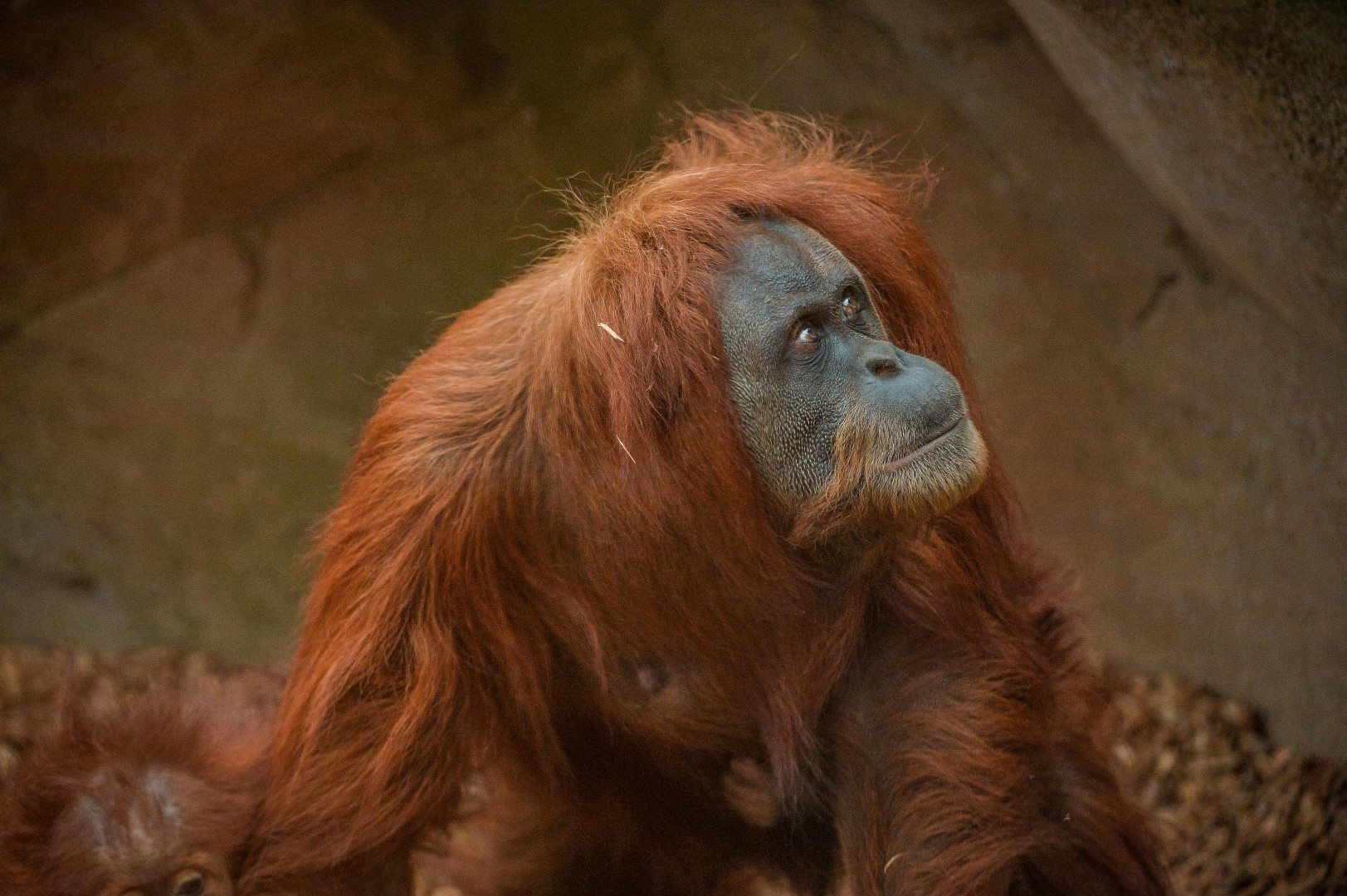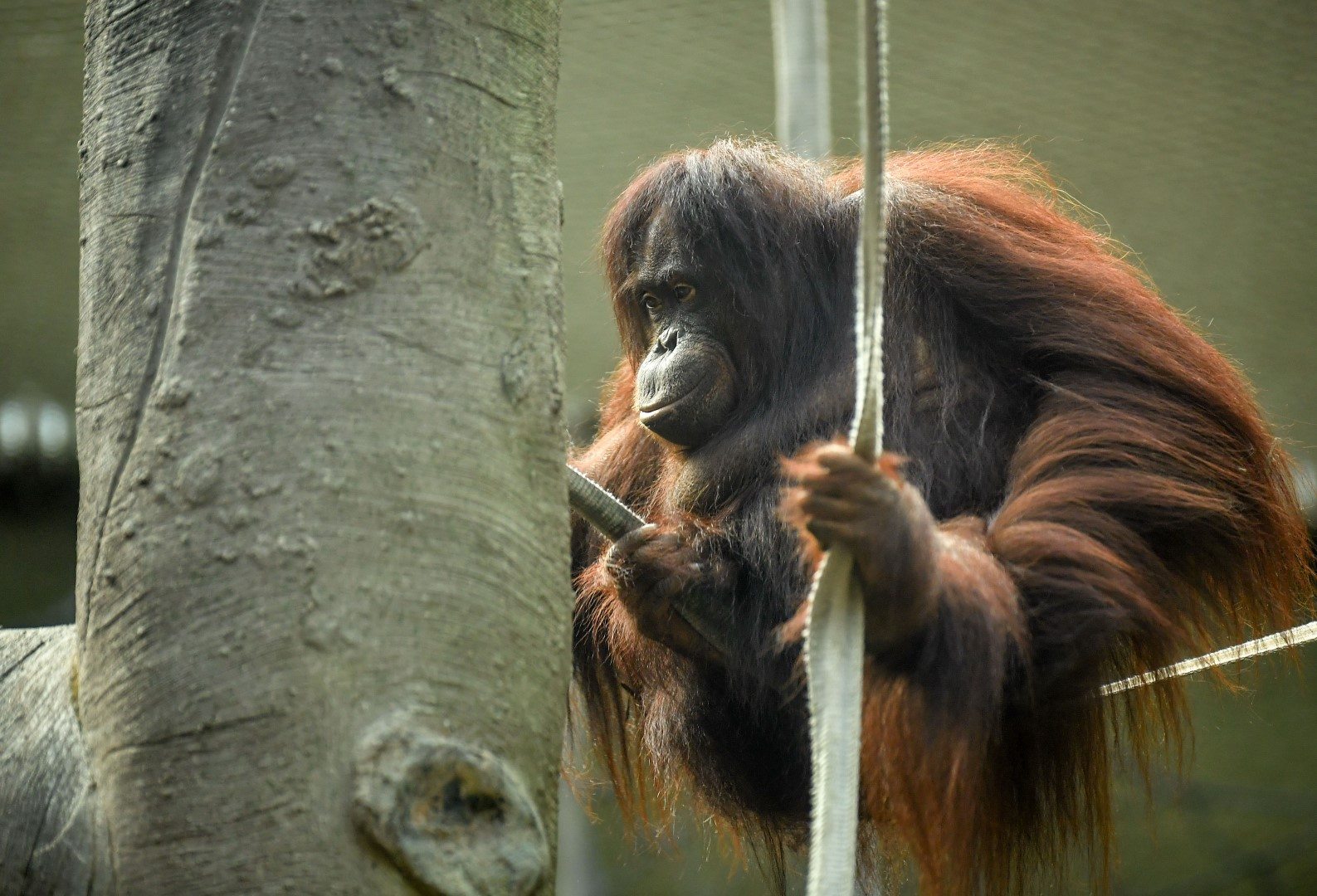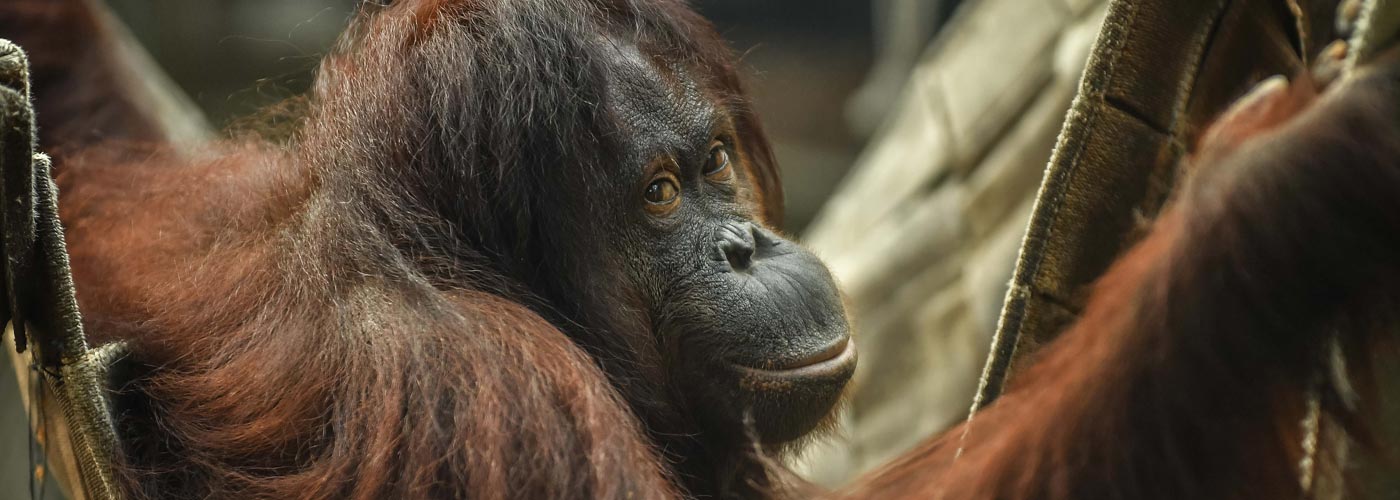

Behaviourally the most commonly cited difference is that the Sumatran orangutans do not venture to the floor as much as their Bornean counterparts. This ties in with the fact that tigers are found on the forest floors of Sumatra, so staying high keeps them safer.
Sumatran and Bornean orangutans were previously taxonomically divided into sub-species but reclassified as separate species in the late 90’s. The estimated numbers of Sumatran orangutans is much lower than that of Borneans. Currently Sumatrans are classed as critically endangered whilst the Borneans are classed as endangered.
UPDATE: Bornean orangutans are now officially critically endangered. Find out more here.

Chester Zoo is one of the few places in the world that homes both species, and one of even fewer institutions that hold breeding groups of each species. Our conservation programme, Realm of the Red Ape, supports conservation work in both Borneo and Sumatra.
Behaviourally, here at Chester, the differences are very much down to the individual animal rather than any uniform difference between the two species.
Physically the hair of the Sumatran orangutans is paler and more ‘golden’ in colour. The major difference between the two species occurs in mature adult males that have developed their cheek flanges. The cheek flanges of Sumatran males, like Puluh, grow so their faces become rounded and dish shaped and covered in small fine hairs. Bornean males, like Tuan, have more fatty flanges on each side of the face and the hair on the face is much sparser.
I am Chris Yarwood, Lead Keeper on the Primate section at Chester Zoo, and I Act for Wildlife.